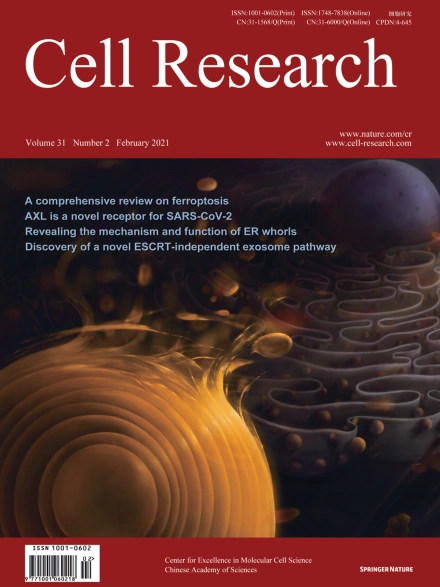
Advanced Search
Submit Manuscript
Advanced Search
Submit Manuscript
Volume 31, No 2, Feb 2021
ISSN: 1001-0602
EISSN: 1748-7838 2018
impact factor 17.848*
(Clarivate Analytics, 2019)
Volume 31 Issue 2, February 2021: 237-240 |
Lateral transfer of mRNA and protein by migrasomes modifies the recipient cells
Mingli Zhu1,2 , Qin Zou2,3 , Rongyao Huang2,3 , Ying Li1 , Xudong Xing2,3 , Jianhuo Fang2,3 , Liang Ma1 , Lifei Li2,3 , Xuerui Yang3,* , Li Yu1,*
1State Key Laboratory of Membrane Biology, Tsinghua UniversityPeking University Joint Center for Life Sciences, Beijing Frontier Research Center for Biological Structure, School of Life Science, Tsinghua University, Beijing 100084, ChinaDear Editor,
Migrasomes are recently discovered vesicular organelles which form on the retraction fibers (RFs) of migrating cells.1 Once detached from cells, migrasomes can rupture and release their luminal contents1 in a process named migracytosis. Recently, migrasomes have been shown to play an important role in zebrafish organ morphogenesis by releasing chemokine signals to defined regions of the embryo.2 Thus, migracytosis is considered as a major mechanism for migrasomes to carry out their functions. It has been frequently observed that intact migrasomes can be engulfed by surrounding cells,1 and this has been proposed as a potential mechanism for lateral transfer of cellular contents between cells. However, it is not clear whether the lateral transfer of cellular contents by migrasomes has functional consequences for the recipient cells.
https://doi.org/10.1038/s41422-020-00415-3